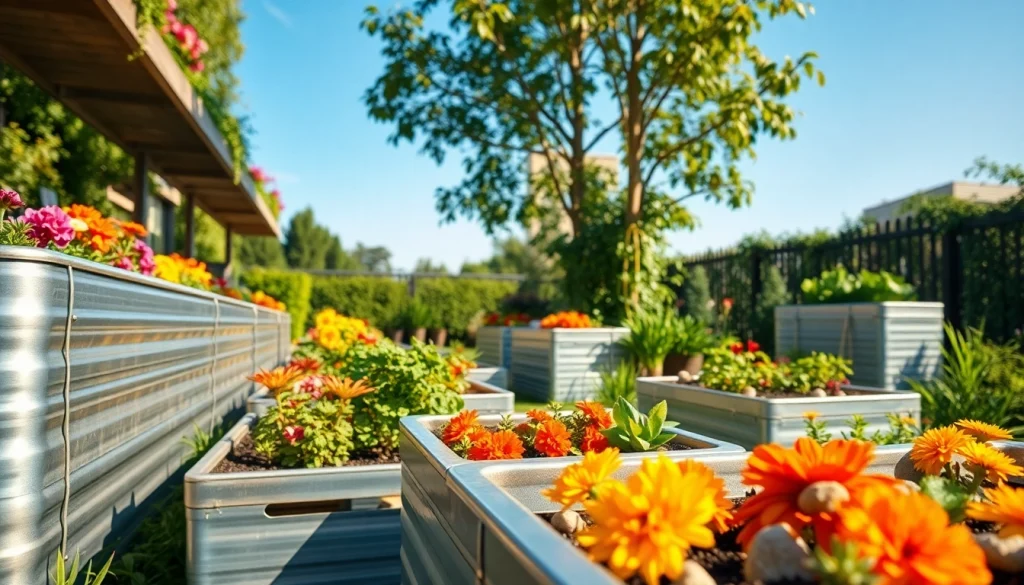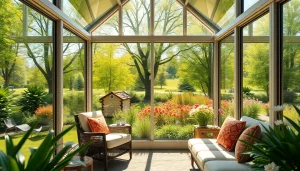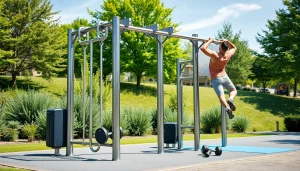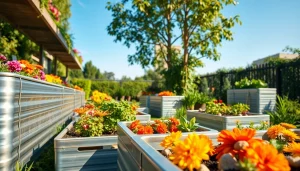Why Galvanized Raised Beds Are the Ideal Solution for Thriving Gardens

Understanding Galvanized Raised Beds
What Are Galvanized Raised Beds?
Galvanized raised beds are garden structures constructed from corrugated metal sheets that have been treated with a layer of zinc to prevent rusting and corrosion. They are designed to create a controlled environment for planting, allowing gardeners to cultivate their crops in a way that enhances growth and eases maintenance. Unlike traditional wooden raised beds, galvanized raised beds offer increased durability and longevity, often lasting for decades without significant wear and tear.
Benefits of Using Galvanized Raised Beds
The use of galvanized raised beds in gardening comes with a multitude of advantages:
- Durability: The galvanization process ensures that the metal is resistant to rust and wear, making these beds a long-lasting investment.
- Pest Resistance: Galvanized metal is less prone to pest infestations compared to wood, minimizing the need for treatments and chemicals.
- Enhanced Drainage: The elevation provided by raised beds improves soil drainage and prevents waterlogging, which is particularly beneficial in areas with heavy rainfall.
- Ease of Access: The height of galvanized raised beds can reduce the strain on your back and knees, making gardening more accessible for individuals with mobility issues.
- Soil Quality Management: With galvanized raised beds, you have complete control over soil quality, allowing you to create the ideal growing conditions for your plants.
- Temperature Control: Metal has the ability to retain heat, which can create a warmer environment for plant roots compared to traditional soil beds.
Common Designs and Styles of Galvanized Raised Beds
Galvanized raised beds come in various designs and styles to fit different gardening needs and aesthetic preferences:
- Rectangular Beds: These are the most common design and are suitable for growing vegetables, herbs, and flowers.
- Oval Beds: Offering a unique look, oval beds can be used in ornamental gardens or to create a focal point in your landscape.
- Tiered Beds: Plants are arranged in layers to maximize space and create a visually interesting garden.
- Custom Builds: Many gardeners opt for custom dimensions to fit their available space or unique gardening needs.
Choosing the Right Location for Galvanized Raised Beds
Sunlight Requirements
Assessing sunlight exposure is critical for the successful growth of plants. Most vegetables and flowering plants require at least 6-8 hours of direct sunlight per day. When positioning your galvanized raised beds, choose a location that receives adequate natural light throughout the growing season.
Soil Drainage Considerations
Effective drainage is vital for plant health. Ensure that your chosen location allows for proper drainage, avoiding areas where water tends to pool. The elevation of galvanized raised beds already promotes drainage, but it’s also essential to consider the underlying soil composition and its ability to absorb excess water.
Accessibility for Garden Maintenance
Accessibility is another important factor when placing your galvanized raised beds. Ensure that the beds are easily reachable to facilitate regular maintenance tasks such as watering, weeding, and harvesting. Consider pathways around the beds for convenient access, especially if you plan to create multiple rows.
Installing Galvanized Raised Beds: A Step-by-Step Guide
Preparing the Area for Installation
Before installation, prepare the site by clearing the area of weeds, grass, and debris. Level the ground as much as possible to ensure stability for the galvanized raised beds. If desirable, you can also lay down a weed barrier fabric to further prevent weed growth.
Assembling the Galvanized Raised Beds
The assembly of galvanized raised beds typically involves a series of straightforward steps:
- Gather your materials, which may include the galvanized metal sheets, corner brackets (if applicable), and screws.
- Follow the specific assembly instructions provided by the manufacturer to ensure your raised bed is structurally sound.
- Once assembled, secure the bed in place by anchoring it to the ground, if necessary, using stakes or brackets.
Filling and Planting Your Galvanized Raised Beds
Fill your raised beds with a mix of quality soil, compost, and organic matter to create a nutrient-rich environment for your plants. Identify your planting needs, and consider starting with easier crops if you are new to gardening. Be sure to arrange plants according to their growth requirements, spacing them adequately to promote airflow and avoid overcrowding.
Caring for Your Galvanized Raised Beds
Watering Techniques for Optimal Growth
Effective watering is essential for the thriving of your plants. Use a drip irrigation system or soaker hoses connected to a timer for consistent moisture levels. Alternatively, hand watering can be effective; aim to water at the base of the plants to minimize evaporation and disease.
Pest Control Solutions in Raised Beds
To protect your plants from pests, consider using organic pest repellents and barriers. The height and enclosed design of galvanized raised beds can deter some pests inherently. Additionally, integrating companion plants can help repel unwanted insects naturally.
Seasonal Maintenance Tips for Galvanized Raised Beds
Regular seasonal maintenance can enhance the productivity of your galvanized raised beds:
- Spring: Clear out any dead plants and weeds, enrich the soil with compost, and prepare for planting.
- Summer: Monitor moisture levels, treat pests, and prune plants as necessary to promote airflow.
- Fall: Take down spent plants and consider planting a cover crop to enrich the soil over winter.
- Winter: Protect your beds from harsh weather by adding mulch or covering with frost cloths.
Maximizing Productivity with Galvanized Raised Beds
Companion Planting Strategies
Companion planting can maximize space and improve crop yields. This technique involves pairing plants that benefit each other, such as planting marigolds alongside vegetables to repel pests. Research various combinations to find the best pairings for your garden.
Crop Rotation Techniques for Healthy Soil
Crop rotation helps prevent soil depletion and limits pest issues by changing the plants grown in each bed seasonally. This method encourages diverse soil microbiology and promotes healthier plants over successive growing seasons.
Harvesting and Storing from Your Galvanized Raised Beds
Be mindful of the timing of your harvest to ensure peak flavor and nutrition of your crops. Learn to recognize the right signs for harvesting each type of plant. Consider using appropriate storage techniques to prolong the freshness of your harvests, such as refrigeration for leafy greens or drying for herbs.







